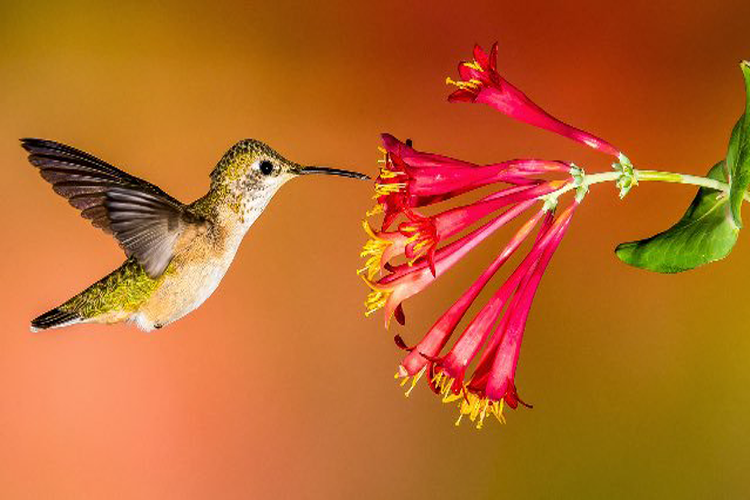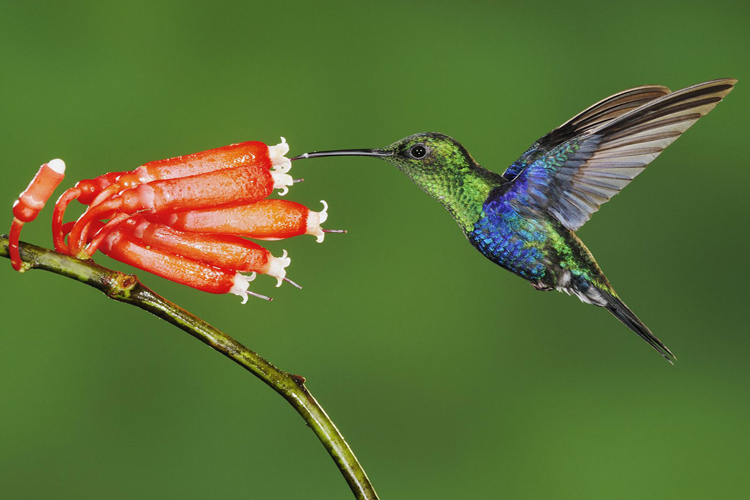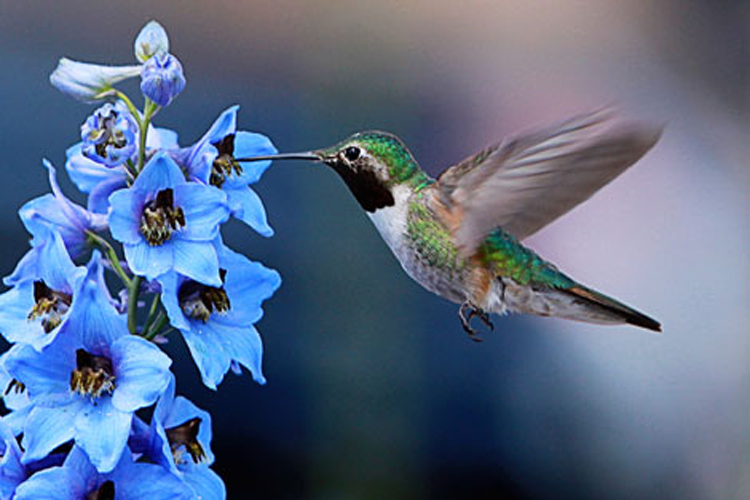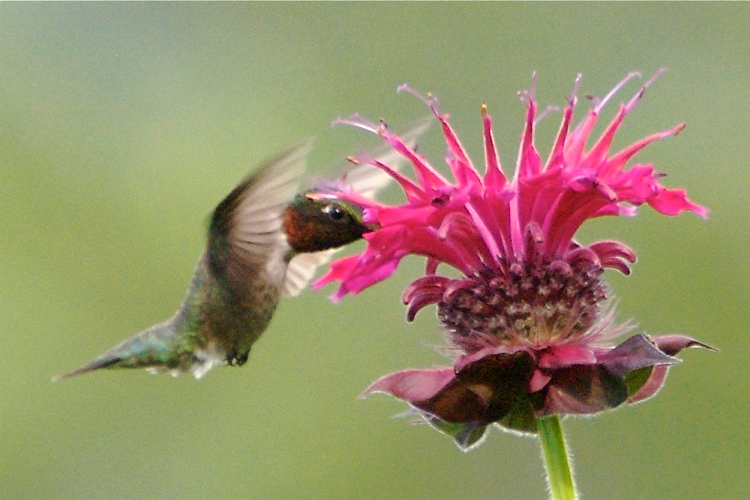Pollinator Partners Hummingbirds
Hummingbird Pollination
Insects aren't the only creatures that help pollinate flowers – hummingbirds play a crucial role in the pollination of many different flower types. Many flowers have even evolved specific characteristics to entice hummingbirds to help their reproduction.
Hummingbirds are most attracted to red, pink, yellow and orange blooms, and flowers may have solid colors or patterns of those colors to attract attention. Because birds see color along a greater spectrum than humans, ultraviolet shades can also play a part in attracting hummingbirds.
Long, tubular blooms are ideal for hummingbird bills, and the tubes can hold a greater reservoir of nectar to accommodate birds' appetites. The most popular hummingbird flowers often have a funnel-like shape that helps nectar accumulate in the base. Thin flower tubes can also exclude insects or other animals that may hurt blooms rather than help pollination.
Because scent is not a strong sense for most hummingbirds, flowers that specifically target these birds for pollination assistance usually do not have much aroma. Instead, flowers with strong smells often attract insects more easily.
Because these birds feed 5-8 times per hour on average, and may visit dozens or hundreds of different flowers daily, there is ample opportunity for a single bird to pollinate multiple flowers by any of these methods:
Just knocking pollen grains around inside a single flower may lead to successful pollination. When a hummingbird nudges a flower with its bill or creates a breeze with its wings, that disruption may be enough to pollinate the flower.
Pollen is sticky and can easily adhere to a hummingbird's bill as it sips nectar from a flower. When the bird visits a different flower, that pollen is transferred to a new bloom for pollination.
Very deep blooms often have long stamens and tall anthers, the parts of a flower that contain the pollen. When a hummingbird inadvertently brushes against the anther, the pollen may stick to the bird's head to be transferred to the next bloom the bird visits.



